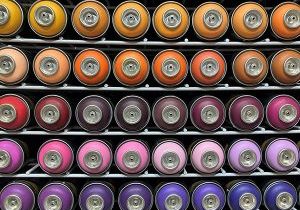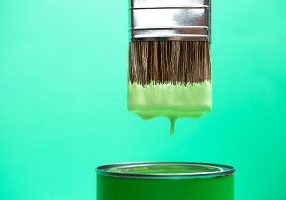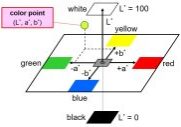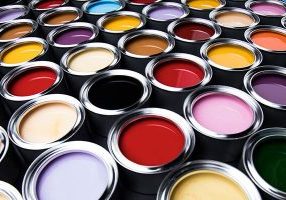Industrial coatings are generally formulated to provide environmental protection, though they can also offer aesthetic appeal. Corrosion control of steel or concrete surfaces is the most common use of industrial coatings, as well as fire resistance provided by intumescent coatings.1
According to market research firm IRL, sales of general industrial paints and coatings hit $23 billion in 20152, and are expected to reach over 8.9 million metric tons by 20203. Numbers from ReportLinker project global demand for industrial coatings to touch $105.5 billion by 2022. Asia-Pacific has been estimated to be the largest market as well as the fastest growing market4.
Fire resistant, corrosion control, and industrial coatings—such as those for factories, warehouses, bridges, iron fences, and silos—need to be formulated to address a variety of surfaces and applications, though they are generally direct-to-metal (DTM). Formulating these products requires expert knowledge of their applications to achieve desired results.
Common industrial uses and environments:
- Factory equipment
- Metal containers and closures
- Equipment, parts, and vehicles
- Marine
- Aeronautical
- Automotive
- Warehouses and flooring
- Metal bridges
- Silos
- Coils
- Wastewater and sewage facilities
- Pipelines and terminals
- Power facilities
- Chemical processing plants
- Road marking
Common applications/requirements:
- Heat/Fire resistance
- Corrosion control
- UV protection
- Abrasion resistance
- Dirt and stain protection
- Chalking and fading resistance
- Thermal/Energy-efficiency
- Moisture repellant/resistance
- Powder systems
Surface considerations
The type of substrate helps determine the coating property requirements. Consider creating a requirements checklist:
- What environmental, or other abrasive conditions will the surface be exposed to?
- How many coats will the surface require?
- Should the coating be clear, or does it need uniform hiding coverage?
- Is a waterborne formulation required?
- What are the rheological requirements?
- How long is the coating expected to provide protection?
Protective and Industrial Coatings Materials Database
Prospector® is a material search engine with data for more than 70,000 products. Discover and research ingredient descriptions, MSDSs, certifications and more - register for free now!
| Featured Formulations |
| Heavy Metal Free 2K Waterborne Epoxy Dispersion Industrial Maintenance Primer by ICL Advanced Additives - featuring HALOX® CW-491 |
| Nubicoat HTS Solventbased Concentrate at 55% by Ferro-Nubiola - Pigment concentrate of Ultramarine Blue for solvent industrial coatings. |
| Waterborne Styrene-Acrylic Emulsion (Neocryl XK-65) by GRACE - a guideline formulation for industrial applications. Neocryl XK-65 is a water-borne rheology controlled styrene-acrylic emulsion designed for automotive primer applications. |
| Fire Resistant Coating by Buckman Laboratories, Inc. - This formula for fire resistant coating utilizes the product Bulab® Flamebloc. |
| Sand-Filled Flooring by Huntsman Performance Products - Floors of this type, where an epoxy matrix is used to bind sand and/or other pigment-like fillers into a monolithic floor surface, are very popular, especially for industrial areas. Systems can be formulated to give good abrasion resistance, high impact capacity, easy maintenance, and good chemical resistance. |
| View All Maintenance/Protective/Industrial Coatings Materials |
References and resources:
- CoatingsWorld: Industrial Maintenance Coatings
- CoatingsWorld: The Industrial Coatings Market
- PCI Magazine: IRL Releases Analysis of General Industrial Coatings Market
- ReportLinker: Industrial Coatings – A Global Market Overview
- IRL: General Industrial Coatings market research reports
- Paint.org: Types of Coatings
- WEG: Industrial Maintenance Coatings Guide [PDF]
Further Reading:
The views, opinions and technical analyses presented here are those of the author or advertiser, and are not necessarily those of ULProspector.com or UL Solutions. The appearance of this content in the UL Prospector Knowledge Center does not constitute an endorsement by UL Solutions or its affiliates.
All content is subject to copyright and may not be reproduced without prior authorization from UL Solutions or the content author.
The content has been made available for informational and educational purposes only. While the editors of this site may verify the accuracy of its content from time to time, we assume no responsibility for errors made by the author, editorial staff or any other contributor.
UL Solutions does not make any representations or warranties with respect to the accuracy, applicability, fitness or completeness of the content. UL Solutions does not warrant the performance, effectiveness or applicability of sites listed or linked to in any content.














Thank you for pointing out that when you are choosing a coating you need to consider what environmental condition the surface will be exposed to. This seems like something anyone in the industrial industry should look into. Hopefully, they do their research and find the best coating services possible.
I found it interesting that there are coatings that assist in corrosion control for buildings. My brother is building a new location for his business, so I have been helping him by looking into what he will need during the process. I will send this information over to him, so he can look for an architectural coating service that can do the job.
Industrial Coating Protectives resources, this is a great blog post. Thanks, mate, for sharing this.